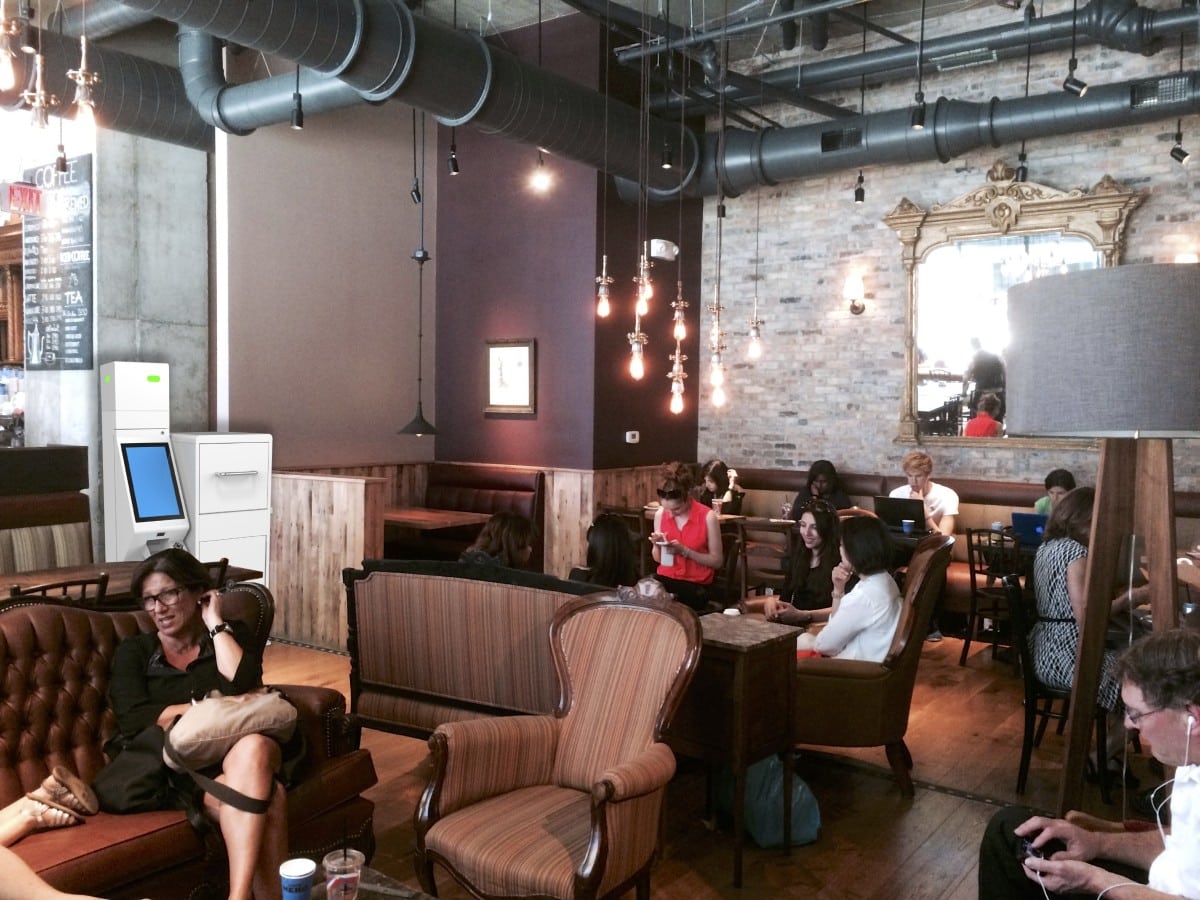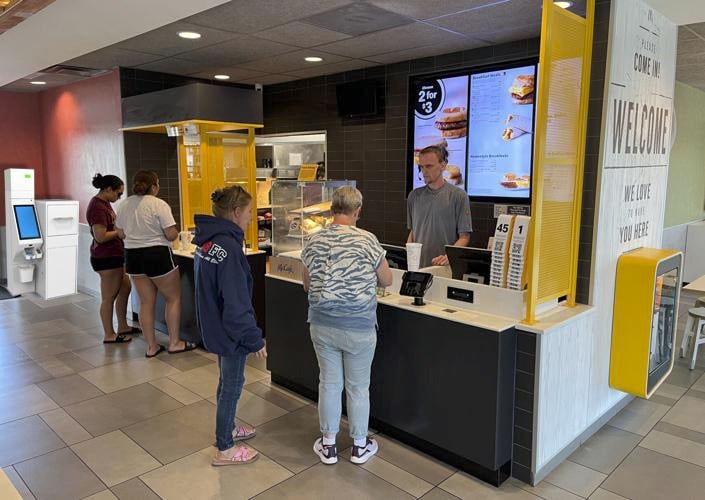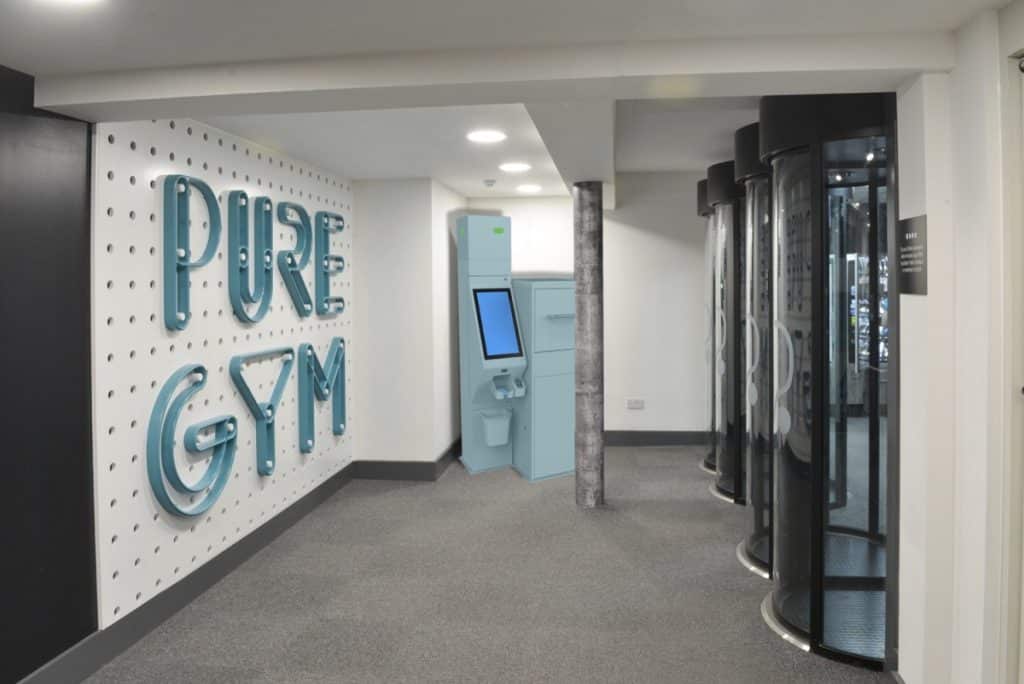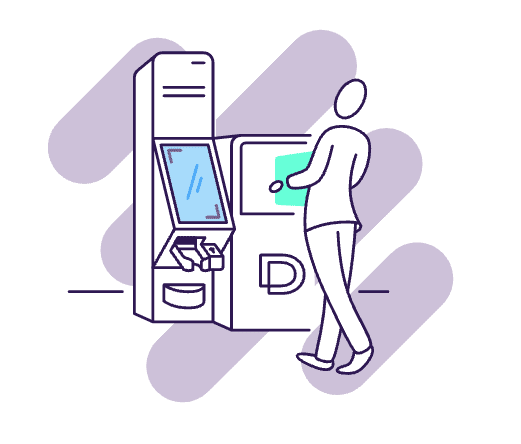Insight / Blog
Espresso returns – the future of parcel drop-off

Summary: Self-Service Kiosks open up new possibilities for returns and sends to be dropped off in coffee shops, gyms, fast food chains and more.
One of the key reasons why Self-Service Kiosks (SSKs) are so high up the priority list for many Posts and Carriers is that the automated journey delivers a great customer experience whilst reducing dependency on staff. They are also a lot smaller than parcel lockers, which allows them to fit into places that other drop-off solutions cannot – and which until now might have seemed off-limits to carriers. So, kiosks can open a range of new locations and hence new host partnerships for carriers, allowing them to further expand their out-of-home networks.
At the same time, a new set of retail businesses can benefit from ecommerce returns and consumer-to-consumer parcel sends, drawing in consumers with returns drop-off and sending services, and turning that increased footfall into new customers and new sales opportunities.
Why retail businesses should be deploying parcel kiosks
By implementing a kiosk, new hosts will gain access to the fundamental PUDO host partner benefits of increased footfall and the subsequent boost in revenue. However, being small, flexible and completely self-service, kiosks also provide added benefits of limited staff involvement and adaptability for smaller retail spaces that aren’t suited to traditional PUDO.
For the consumer, having more locations and increased drop-off density will make it easier and more convenient for them to use, improving the overall experience. Increased density will also increase the speed at which consumers return their items, meaning they’ll get back to the retailer and up for resale faster.
In terms of sustainability, there’s also strong evidence that the closer drop-off points are to consumers, the higher the likelihood they’ll access it in environmentally friendly ways. In a recent roundtable, Kris De Schepper, VP of Sales at bpost, said that when PUDO points were within ‘slipper distance’ to consumers (around 500m), 80% of them were accessed by bike or on foot.
However, even if kiosks are not within ‘slipper distance’ of consumers, placing them in more diverse locations will increase the likelihood that consumers will access them as part of a chain trip or already existing journey. Diversifying drop-off locations will ultimately help them to fit more naturally into consumers’ daily lives, improving the overall experience.

Location option #1: cafés and coffee shops
Cafés and coffee shops could be an ideal location for kiosks – they’re used by millions of people on a daily basis, and they’re all across the land in the middle of urban centres. The UK branded coffee shop market will surpass pre-pandemic sales by the end of 2023, reaching £5.8bn over the next five years at 5.8% CAGR, showing that café culture is still very much alive.
Adding returns to a location ingrained in shoppers’ routines makes adoption a more natural process – they go for their regular coffee and complete their returns while waiting for their drink to be made. Traditionally, cafés wouldn’t have worked as PUDO locations for two reasons: a lack of square footage to store parcels (particularly with big coffee machines or kitchen equipment behind the counter) and a lack of staff capacity. If workers are dealing with parcels in busy periods, they’re not making drinks, directly impacting sales.
Kiosks solve both challenges. As they are self-service, consumers can use them to process the returns without taking time away from busy staff. Secondly, the kiosk is small and flexible, allowing hosts to place it in free space within the seating area away from the counter, bringing more footfall into stores without blocking up the counter queue. And who can resist the smell of freshly roasted coffee?

Using kiosk technology would be a natural progression for coffee shops, as many big brands are already using self-service technology in-store. For example, Costa (the biggest coffee chain in the UK) has a consumer app for click-and-collect orders, as well as QR codes on tables for consumers to order from. Consumers could therefore order by phone, return their parcels, and have their drinks arrive at their table when ready without entering a single queue.
With just under 2,800 Costa locations at the start of 2022, a kiosk partnership would significantly expand a carrier’s parcel network in valuable high-traffic locations.
Location option #2: fast food restaurants
The same principles apply to fast food restaurants, where consumers could drop off their returns while waiting for their food. The small, flexible units can be placed out of the way of the counter, allowing consumers to process their returns without interrupting the existing setup.

Fast food restaurants are also typically willing to implement self-service technology, with ordering kiosks becoming commonplace in many locations. If consumers are already used to this experience, they’re primed to use kiosk technology for returns or C2C sends.
For carriers, fast food restaurants like McDonalds could provide one of the quickest ways to build a dense network within ‘slipper distance’ to consumers as it already has over 1,300 locations in the UK.
Location option #3: universities
Universities are an excellent kiosk location option thanks to the thousands of students that live on and travel to the campus every day. That’s a lot of foot traffic, from people who are statistically some of the most likely to order things online (and then decide to return them).
According to one poll, three-quarters of Gen Z (16-24-year-olds) buy online monthly. On average, they buy 3 items at any one time. 82% say that they return unwanted items, with the average number of returned items being two. In 2020/2021, there was 2.66 million students in higher education in the UK – if we use this to run the numbers, then:
-
1.99 million students will buy online every month
-
Of those, 1.63 million will make a return
-
If they return an average of 2 items a month, that equates to 3.2 million items in returns each month.
In places of high volume, bigger kiosks units can be deployed with larger storage bins, meaning they don’t have to be emptied as often. In short, the kiosks can be customised to suit the environment they’re in.
As well as returns, there’s also an opportunity for kiosks to be used for C2C sends, helping out students buying and selling second-hand through platforms like eBay or Vinted. This would also be a useful feature for entrepreneurial students, as just over a quarter of university students (27%) currently run or plan to run a business while at university.
Location option #4: gyms
Despite the brief switch to home workouts, one study has shown that members are coming to the gym more than they were pre-pandemic, with visits per subscriber per month 10%-15% higher than two years ago. Carrier networks always benefit from proximity to places where consumers habitually are, so they don’t need to go out of their way to access a collection or drop-off point. It could be particularly powerful for carriers with major sports apparel and athleisure retailers on their books.
For the gym, parcel drop-off becomes an extra service to encourage more usage and renewals, making them an overall stronger proposition with convenient services.

Carriers to facilitate location growth through partnerships
Carriers need to take the lead to diversify the types of locations where shoppers can drop off returns and sends. For that to happen, they need to make the most of the kiosk format, and to make retailers, gyms, coffee shops, universities, and more host locations aware of the power of online returns and parcel sends to add value to their locations and drive new revenue in their businesses. Those who move first will have the advantage of picking the best and most valuable of these new location types; as well as the benefits of expanding their network and driving more consolidated returns volume.
See how Self-Service Returns Kiosks could expand your drop-off network and give shoppers a great returns experience by talking to our team.

Topics:
Related articles
How 3PLs Can Cut Costs, Reduce Waste and Boost Revenue With Smart Returns Management
3PLs should take advantage of returns to help reduce cost, efficiently manage warehouse resources, and aid growth.
Saving profits and the planet: 4 ways to sustainable & cost-effective returns
Returns drain profits and damage sustainability. Luckily, retailers can implement both cost-effective and sustainable returns using these 4 ways.
Speedy refunds: creating happy customers through fast & effective returns
Find out how speedy refunds can recapture revenue, increase customer loyalty and boost lifetime value.












